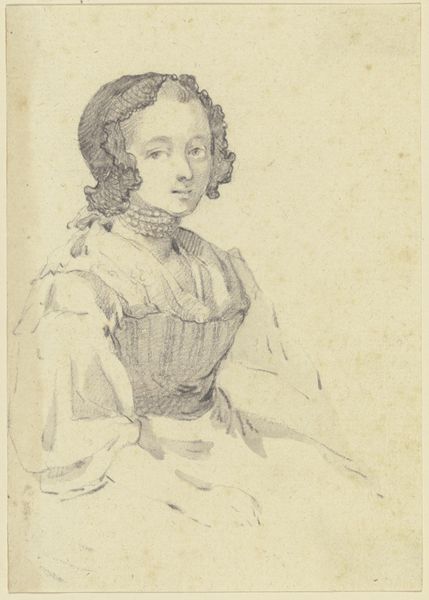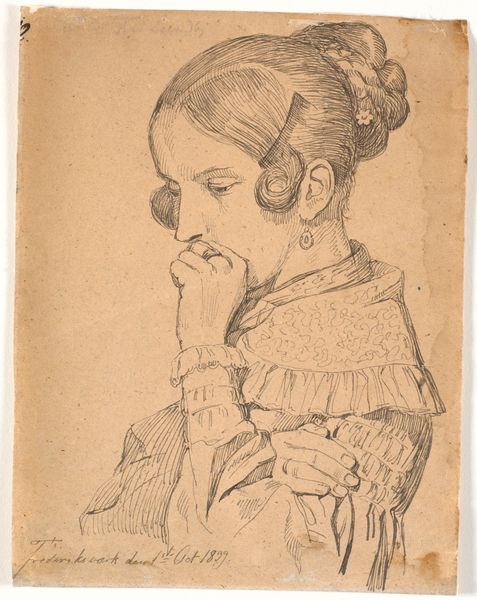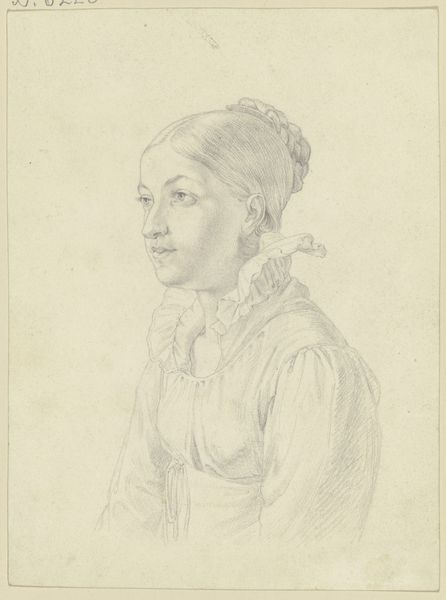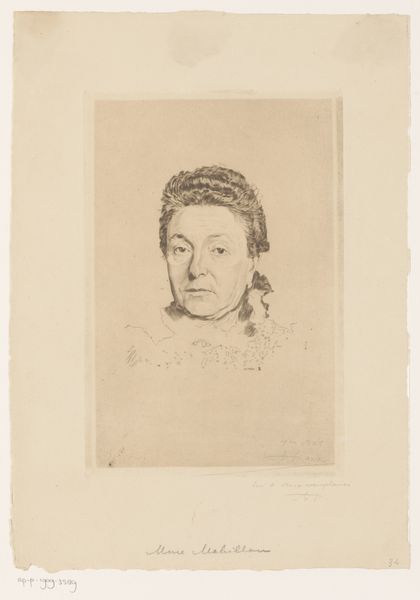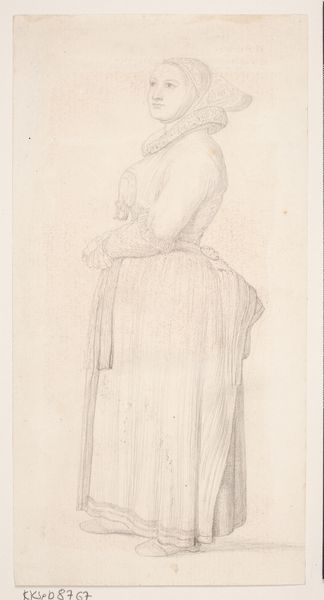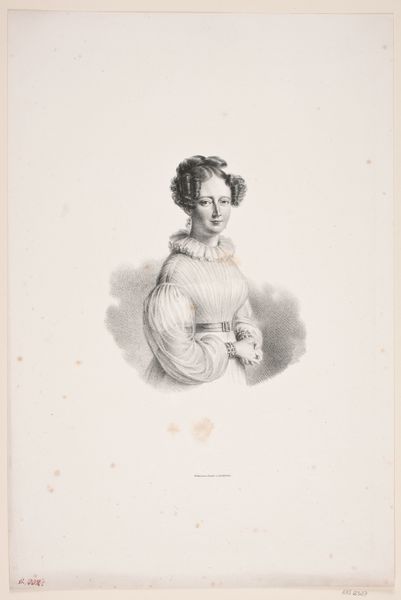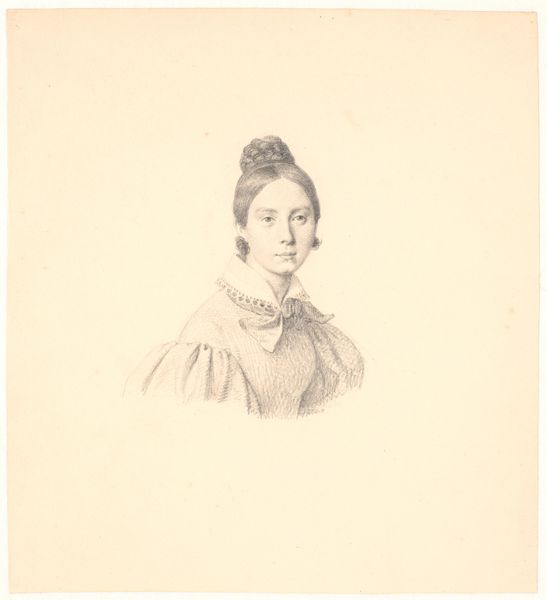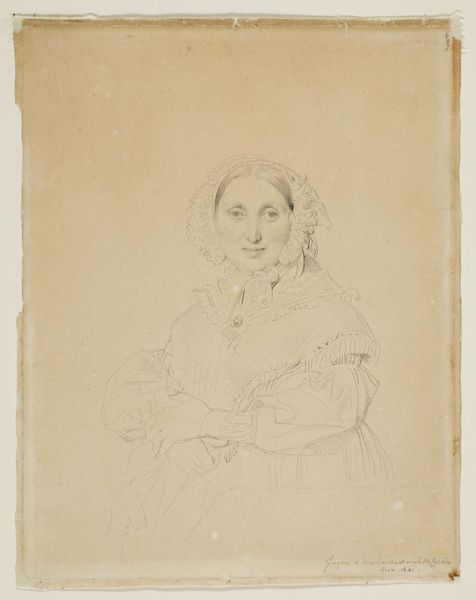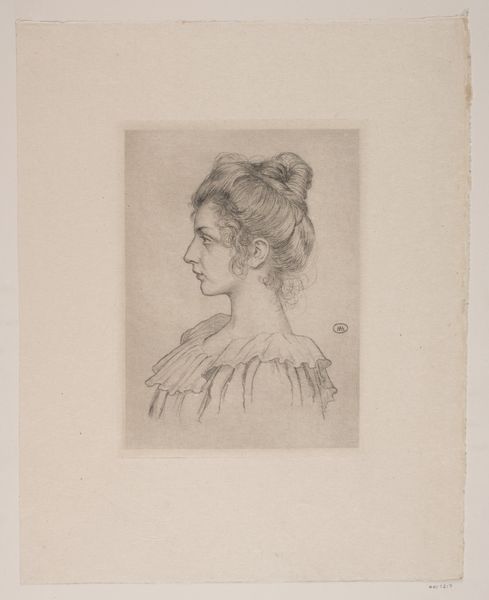
drawing, pencil
#
portrait
#
drawing
#
caricature
#
pencil drawing
#
romanticism
#
pencil
#
portrait drawing
#
academic-art
Dimensions: 228 mm (height) x 195 mm (width) (bladmaal)
Editor: So, here we have Lorenz Frølich's "Dameportræt (Helene v. Germadt)" from 1843, a delicate pencil drawing. The rendering of the dress is interesting. The sleeve treatment especially makes me wonder... what exactly do you see in this piece? Curator: I am immediately drawn to the process, the labor that went into producing this seemingly simple portrait. Think about the acquisition of materials - the graphite for the pencil, likely sourced through a complex system of trade and extraction, and the paper, produced through its own intensive industrial processes. The act of drawing itself becomes a form of labor, of capturing and representing a specific sitter within a social and economic framework. Editor: That’s interesting, I was really just focusing on the way the light fell on her face. Curator: Consider the material realities reflected in the drawing – the sitter's clothing. What does her dress, the pleating at the shoulder and detailing at the bust, suggest about the socio-economic position of both her and the artist? What class is being portrayed, and for whom would this kind of artwork be produced and consumed? Editor: So you’re saying we can understand the economics of 19th-century portraiture by analyzing the actual materials? Curator: Precisely. The pencil and paper are not just neutral tools; they are products of industrialization, reflections of societal power structures that play out in the drawing itself. What labor went into producing the dress itself, in creating the *image* of this sitter in her particular time and place? Editor: That perspective really shifts how I see the drawing. I was struck by the individual, now I see the larger context embedded in the materials. Curator: Indeed. By considering these questions of materials, labor, and production, we move beyond simply appreciating the artistic skill, toward a richer understanding of art as a reflection of its historical and social context.
Comments
No comments
Be the first to comment and join the conversation on the ultimate creative platform.
